Munich High End 2023 Show Highlights
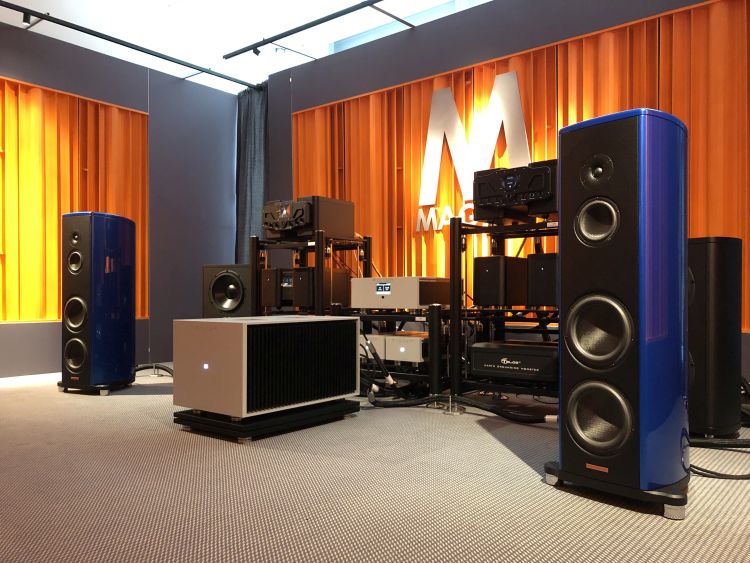
After my 2022 report of the show based on photos, comments, and other content from friends in the industry who are attending, I felt it was time to visit the show in person once again. This time, I opted to go primarily as a visitor and only document the systems that I felt were interesting to me personally. Below are what I regard as the interesting highlights of the High End 2023 show, in no particular order.
Marten Design
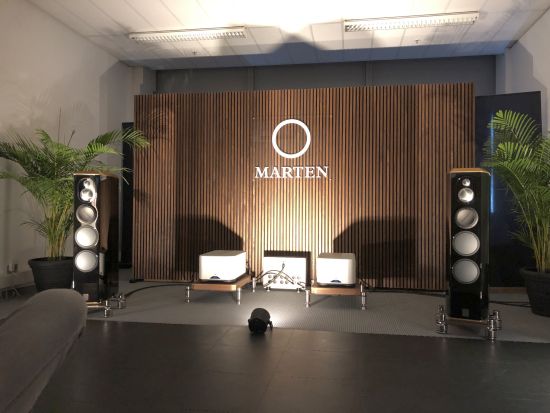
The Marten room featured the world premiere of the Mingus Septet. This is a four-way design with seven drivers and the first Mingus model to feature custom beryllium and diamond drivers. Unique is the very large beryllium dome midrange driver which may have spirited a subtle deviation from the Marten house sound as I have come to know it from earlier models. The Septet still has the familiar deep, voluminous, and relaxed bass, the liquidity and effortless flow, but with a rather more forward and explicit midrange and lower treble than before. Of course, these are Martens, and the Septet does not break the tradition. This model may spicier but it remains fluid and refined and there is no hardness or edge. Some listeners may prefer the more laidback approach of earlier models but there’s no doubt that this latest implementation makes for an appealingly open and spritely sound.
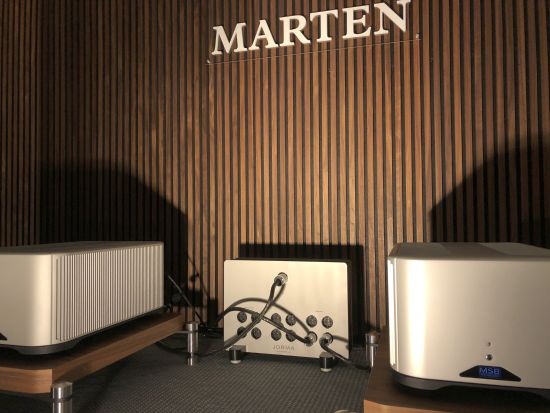
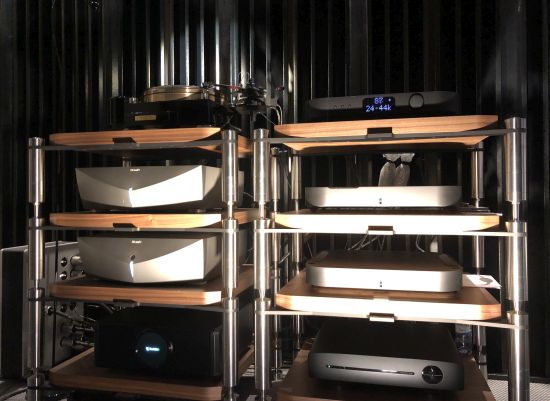
TechDAS turntable with DS Audio optical cartridge, Antipodes OLADRA server, MSB front end, and MSB power amplifiers.
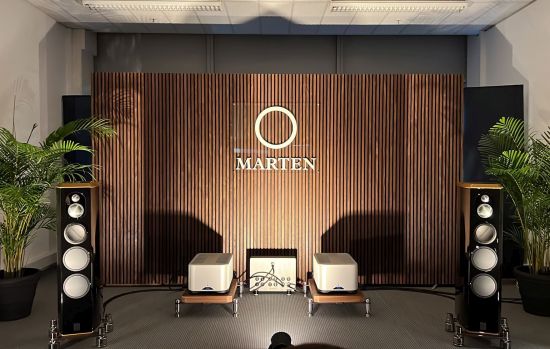
Magico S3 2023 with Wadax, Antipodes, and Pilium
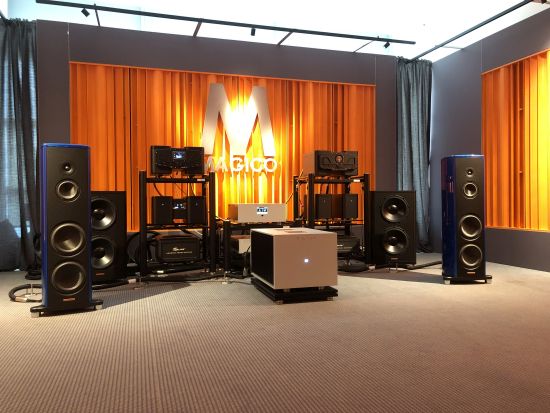
For me, this was one of the very best rooms of the show, featuring the new Magico S3 2023 (Mk3) and S-SUB MkII with Antipodes OLADRA music server, Wadax Atlantis Reference DAC, Server, and Power Supply, Pilium Audio Divine Olympus preamplifier and Divine Zeus Power amplifier, Telos Earth Grounding Monster, Telos Monster Power Station, Nordost network switch, ethernet-, and USB cables and all VYDA cabling.
Assessing these speakers’ inherent performance is tricky, though, due to the effort that has been undertaken to make this particular room sound great. To this end, Magico has allowed acoustic experts to measure and calculate the room’s properties in advance, and treat it accordingly. From what I can tell, the grey frame that can be seen along all room sides is comprised of acoustic absorbing material which likely also functions in part as a bass trap and the orange panels are diffusers. Additionally, there are two next-generation S-SUB Mk II subwoofers. Incidentally, this new sub features a brand-new driver, a new amplification section, and more advanced DSP which according to Magico allows it to perform with even greater finesse and power.
It should be noted that the adjustment of these subwoofers can have a very large effect on the end result. For instance, as would seem obvious, they could augment the S3s such that they sound fuller and more extended than they normally do on their own. But it is also possible to employ the subs to very precisely counter certain room peculiarities such as nulls or peaks, by cleverly making use of the subs’ position and adjustments, which could result in cleaner bass than would be possible with just the pair of S3s.
In any case, this room had hands-down the best bass performance of the show. Tight, articulate, deep, and fast, as well as natural and acoustically convincing. In fact, the sound was so superb that it was more like a highly-tuned home system than a demo at an audio show.
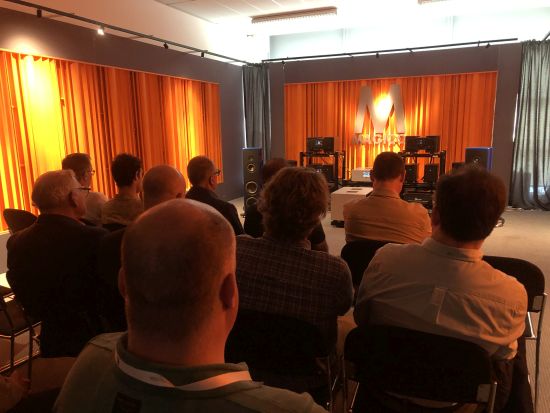
I imagine that such a clean bass response could be something of a two-edged sword at this show, impressing one group that is familiar with such a clean sound while confusing another group expecting a fuller sound as they are used to hearing much more of an impact from rooms.
But superb bass performance aside, the rest of the speakers’ frequency range was impressive as well. The way I experienced it is that there was never a sense of listening to a speaker. Rather, the sound just is. The midrange, in particular, was pure, open, and realistic and reminded me a lot of the Q5 midrange in terms of pure and non-editorialized cleanness except that it was now more organic and involving. Likewise, the treble was liquid and natural, very highly resolving yet also supremely delicate and ultra-refined.
The S3’s treble is subjectively not quite as explicit or (seemingly?) as extended as the Q-series treble, in particular the Q5 that I know well, but it is much more fluid and refined and absolutely never calls attention to itself.
And in comparison to the earlier S3 MkII, all I’ll say is, forget about it. The new S3 is not just better in all respects (treble extension, airiness, and refinement included), but it is simply in a different league altogether.
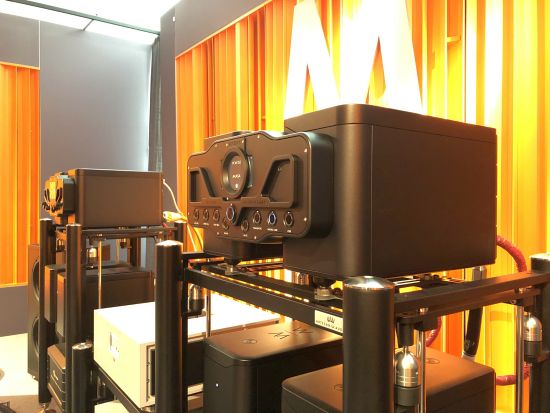
Wadax DAC and Server set up on Artesania Special Edition Exoteryc racks with Master Kyo features and Carbon Fiber Linear Arms.
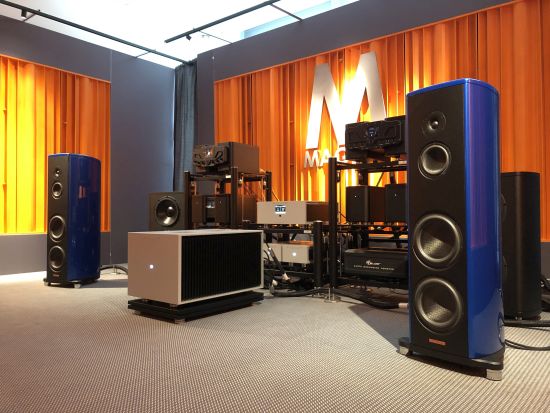
Presumably due to the precise calibration of the system (perhaps done for a single listening position), I did find that the exact listening position had a large impact on the perceived sound. Although still great at the sides or even in the back, the system really sounded the most balanced and provided the best focus and imaging when seated either in the middle of the front row or the row right behind it. And even in these positions, I found that the soundstaging and focus were not hugely impressive. But knowing what Magicos can do, I’m sure this is the result of decisions made when juggling the pros and cons while tackling the difficulties of the room. I imagine weighing razor-sharp focus and wide imaging against super-articulate, clean, and precise bass behavior. In any case, based on this audition, I am deeply impressed.
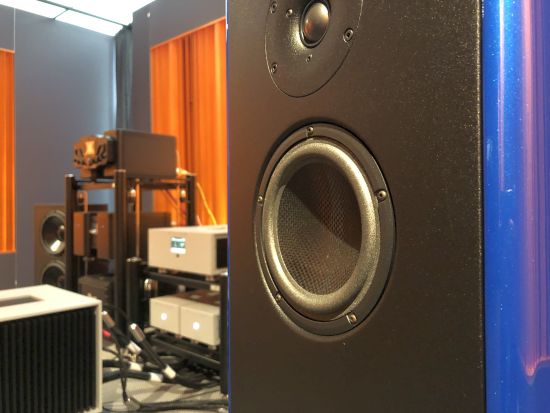
For the first time in a Magico design (that I know of), the midrange and woofer surrounds are made of foam, not rubber. As I understand it, this is the kind that does not deteriorate. Foam has certain benefits, one of which is that it allows a “faster” sound.
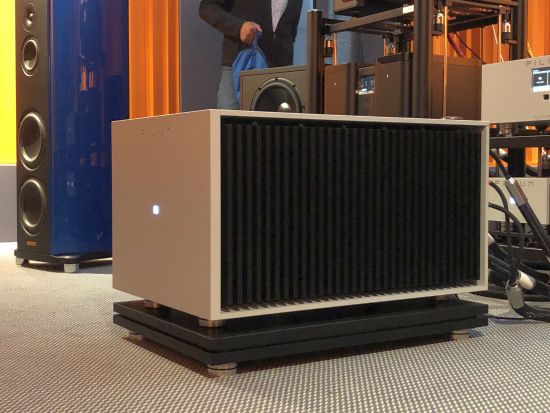
While it may already look large, trust me, this amp really is A LOT larger than it appears in photos!
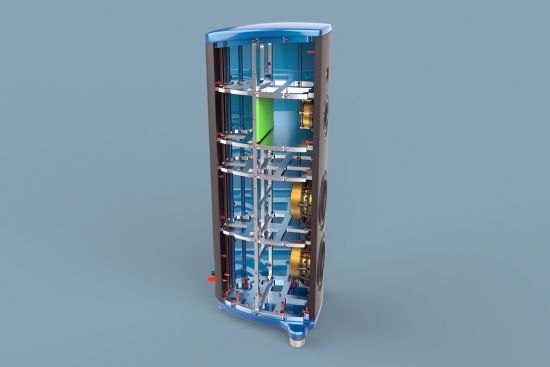
Above is the inside of the S3, showing the extensive cross-bracing and the absence of a plastic bubble to seal the midrange driver from the woofer energy. Instead, the S3 has a similar configuration as the Q series. The crossover normally sits at the bottom behind the lowest woofer.
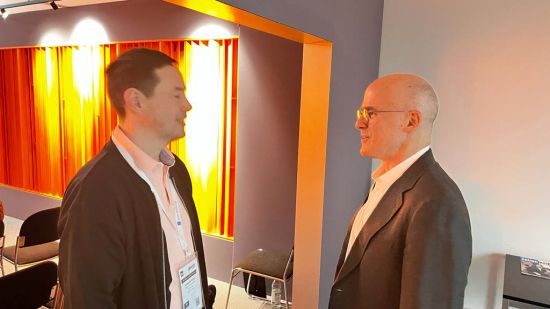
I asked Alon why my humble S1 MkII has a separate sealed chamber for the crossover and the S3 2023 does not. He responded that there is no room within the new cabinet and added that acoustically sealing the crossover provided only a small benefit. They could make room, of course, but that would mean a larger and more expensive speaker.
Next: Magico M6 with Wadax and Dan D’Agostino
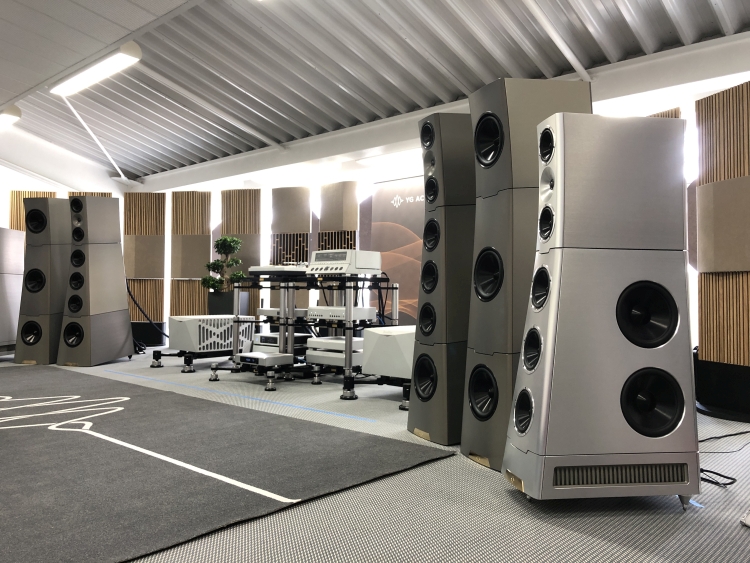



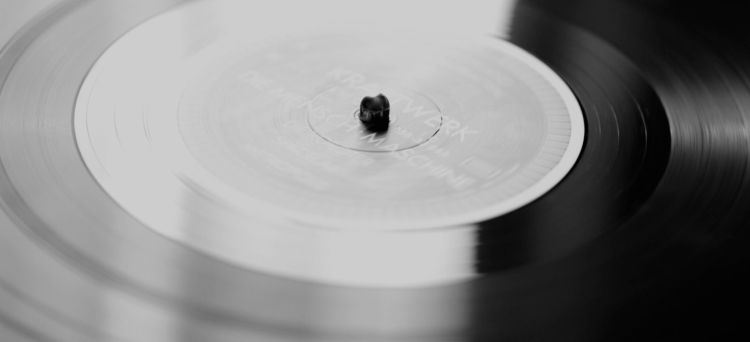
Hi Christiaan,
just read your impressions: well written as always.
The visit to the Marriott, the big Marco Serri loudspeakers… and the big electronics so “fluid” and “harmonic”… transparent, coherent, linear, open, delicate and airy and the bass was deep but agile, very precise and absolutely never overbearing (your words)…
Guess how the hall was “prepared” (wired)
😉
Keep it up!
Thanks, Luca:-) I have not noticed the cable brand(s) in the Marco Serri system, but I’m now thinking maybe it was Faber’s cable?
Hi all, we confirm the wiring and setup were by Faber’s Cables, which we publicly thank for their contribution
Marco Serri Design
You win!
:))
Without wanting to do “free propaganda” here, as you could hear and despite the “massive” speakers and a complex system, in a hotel room that was not perfectly “adequate”, the sound was “graceful”, especially the digital one.
Better than a thousand words (practically “blindly”), you tried what I told you about the ground connection, the masses and so on.
Ask me more… “privately”…
😉
Thank you
Hi Christiaan,
I really enjoy reading your HFA commentary. You have a talent for making complex topics easy to understand and a real gift for describing in language something as indescribable as music.
In your recent show report about the Taiko/Alsyvox room you wrote, “But I’ll add that no one will ever mistake them for, say, Wilson Audio speakers. These are just very different breeds.”
Would you care to expand on this? I’ve never heard the Alsyvox speakers though in the past and very distant past I’ve owned Magnaplanar planar magnetics and Acoustat electrostatics. I do however own Wilson Alexx speakers, so I’m familiar with Darryl Wilson’s sound (I have to say, I was never in love with his father Dave’s designs’ sound signature). To triangulate further with what else I’m familiar with in the high-end, prior to the Alexx I lived with Sonus Faber Aidas for some years.
Thanks very much,
Steve Z
Hi Steve, thanks for the kind words!
I’ve taken Wilson as an example as they are a well-known and iconic brand and because in my mind, they are in many ways diametrically opposed to the typical dipole magnetostatic ribbon panel sound.
Speaking from experience having owned Wilson WP8 and having heard other older, newer, and current Wilsons in various places in the Netherlands, I find that these speakers tend to sound rather fulsome in the bass, especially the upper bass. This is true in relatively large (for Dutch terms) spaces and usually more so in smaller spaces. In part this may be by design, but it might also partially be a result of the speakers being developed primarily for American residences which tend to be large and constructed in large part from wood and drywall. In the Netherlands, these speakers are used in relatively small rooms with concrete floors and walls which often create rather serious room modes that are hard to address, especially when using Wilsons. This can lead to a relatively bombastic sound that I know many people actually enjoy and might perceive as natural. I will gladly admit that there is indeed a very nice “live” aspect to the Wilson sound that I quite enjoy.
Naturally, it’s of course not just Wilson that can interact quite strongly with room modes but basically all dynamic speakers and predominantly the ported ones. What also made me use Wilson as an example is that after enjoying Magnepan, Apogee, and Martin Logan speakers with no issues, I was sadly unable to get my Wilsons to sound linear in my inherently imperfect room, which made me move on to closed cabinet speakers, currently Magicos, which work much better in my then-rather challenged environment.
So, how does this relate to magnetostatic ribbon speakers? Well, due to their dipole in-phase/out-of-phase nature and figure-of-8-radiation pattern, speakers of this kind tend to agitate room modes very significantly less so. So much so, in fact, that one could be entirely unaware of existing acoustical issues in a given room, when using Magnepan, Apogee, Diptyque, Analysis, or indeed Alsyvox speakers.
If one is not accustomed to the sound of truly clean bass, hearing it for the first time from a speaker like the aforementioned dipoles may lead one to believe the sound is lean, thin, lacking body, or tonality. While some of the aforementioned brands could objectively indeed be regarded to sound less full-bodied, robust, and tonally saturated as the average well-designed dynamic speaker, I can’t accuse Alsyvox of any of this. To me, they sound very realistic and actually achieve a balance that is as close to neutral as I have heard it from a speaker. To a large extent, you can think of ribbon speakers as listening to headphones. There will be deep, articulate, precise bass, and it can even be rather powerful, but it won’t be the same as from a big dynamic speaker. Now image that “ideal” headphone sound and extrapolate it to coming from a speaker, but with greater dynamic impact. That’s how I would describe the Alsyvox speakers.
Ultimately, though, and this is the point of the comparison that I was making in the show report, I would propose that none of the panel speakers mentioned will sound quite as voluptuous, gut-wrenching, and full-bodied as a Wilson, even when the latter is setup in an ideal room. In the end, it is to some extent a relative matter and that’s what I was trying to convey.
Thanks very much for taking the time, Christiaan. Very helpful, as always!
Great commentary as usual, it’s interesting what you say about the new Magico’s S3’s having heard a variety of Magicos over the years i find them a bit cold in places. Obviously amplification plays a big role in this but will be interesting to hear what they are like in a ones listening space. I sadly didn’t get into this room too much to see in one day. Agree on the Wilsons, impressive in a big space, but more cut out for the US market.
Did you get to the TIDAL room? that was best for me that i heard all day, especially the Tidal for Bugatti. Different level in my book to most things there, first time on hearing this. Not sure about the totally polished cabinets but the sound was amazing.
keep up the good work! love reading the reviews.
Miami
Hi Miami, The assessment of the quality/beauty/realism of sound reproduction really is quite personal. I believe that since hifi is inherently never a perfect representation of reality, we as individuals choose which aspects of the sound reprodution we associate with being appealing or sounding realistic. To me, these may be a different set of aspects than to you, or someone else. I know that there are people who find Magicos to sound relatively cold. To a large extent, I think this is based on listening to Q-series models which are indeed incredibly revealing and can be fussy. I would not label S-series and M-series Magicos as cold, but I know that there are people who still hear them as such. The new S3 sounds to me like a hybrid between the S-series, Q-series, and M-series. It has exrtremely low coloration and distortion, and as demonstrated in Munich this year, the speaker can sound remarkably clean and coherent. To an extent, this is also the result of cleverly used subs and considerably more ideal room conditions than normal. But what I found particularly compelling was that there was never any edge or hardness and the speakers managed to sound fast and accurate as well as gentle and refined. Ultimately, the assessment of what constitutes great sound is in the ears of the beholder and it remains a matter of perspective and of personal preference. The variety of preferences and methods of reproduction, and the quest for finding the ever more ideal balance, is what keeps it interesting:-) Alas, the Bugatti was not playing when I visited the Tidal room.